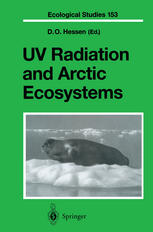

Most ebook files are in PDF format, so you can easily read them using various software such as Foxit Reader or directly on the Google Chrome browser.
Some ebook files are released by publishers in other formats such as .awz, .mobi, .epub, .fb2, etc. You may need to install specific software to read these formats on mobile/PC, such as Calibre.
Please read the tutorial at this link: https://ebookbell.com/faq
We offer FREE conversion to the popular formats you request; however, this may take some time. Therefore, right after payment, please email us, and we will try to provide the service as quickly as possible.
For some exceptional file formats or broken links (if any), please refrain from opening any disputes. Instead, email us first, and we will try to assist within a maximum of 6 hours.
EbookBell Team

4.0
66 reviewsAlthough there are some biological processes that are supported by UV radiation, most organisms are stressed by it in various ways, e.g. through DNA damage.
Top international experts present an integrated overview of UV radiation and its effects on terrestrial, freshwater and marine Arctic biota. Increased stratospheric ozone depletion and the corresponding increase in ground levels of UV radiation as well as ambient, "natural" UV radiation as a key ecological factor in the Arctic spring and summer are discussed in detail. Additionally, basic information on Arctic ecosystems is given. The volume provides not only an excellent account of present-day knowledge of the subject, but also describes the state of the art on which future research can be built.